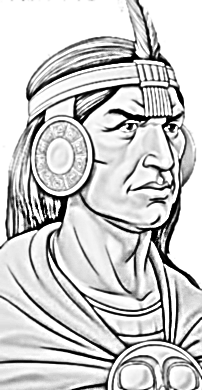
Tired from the long journey all the way from the Pucará de Quitor to Santiago de Chile, Pachacutec is highly astonished about today's size of the city. Before the arrival of the Spanish conquerors, Santiago was one of the administrative centres of the Inca, known as tampus. They were hall-like cabins, where traders and messengers could rest, military and state affairs were negotiated, and travellers could stay overnignt. Those tampus were found along the entire, perfectly arranged, road network serving for the army and for trade, as well as for the communication system. A sophisticated system of messengers enabled the transfer of information over 240 kilometres per day. Pachacutec now starts his exhausting ascent to Portillo at almost 3000 m asl.
What is today's importance of Santiago de Chile? Find it out! By clicking on the title image, you can see further important elements of the urban landscape of Santiago de Chile. You can also click on the Inca warrior to learn more about the road network of the Inca.






















